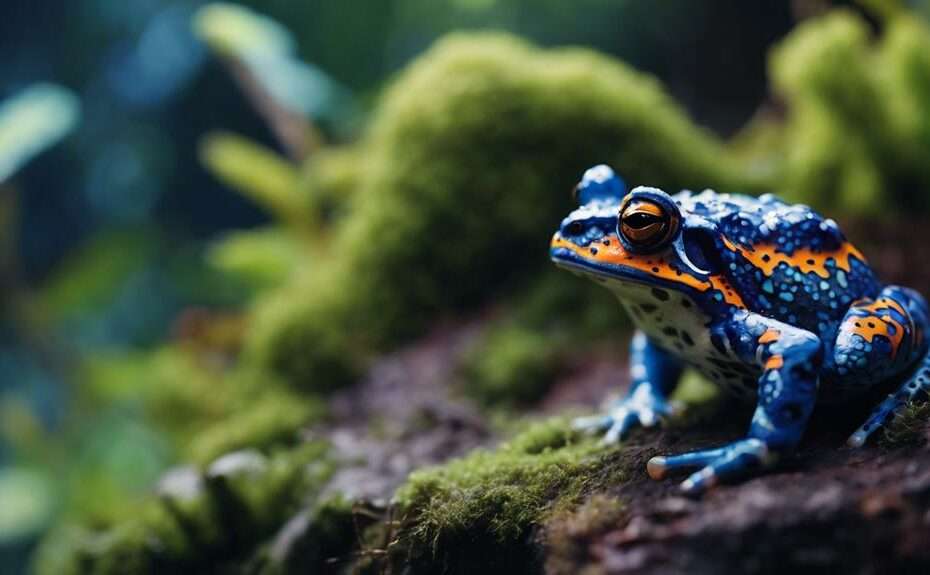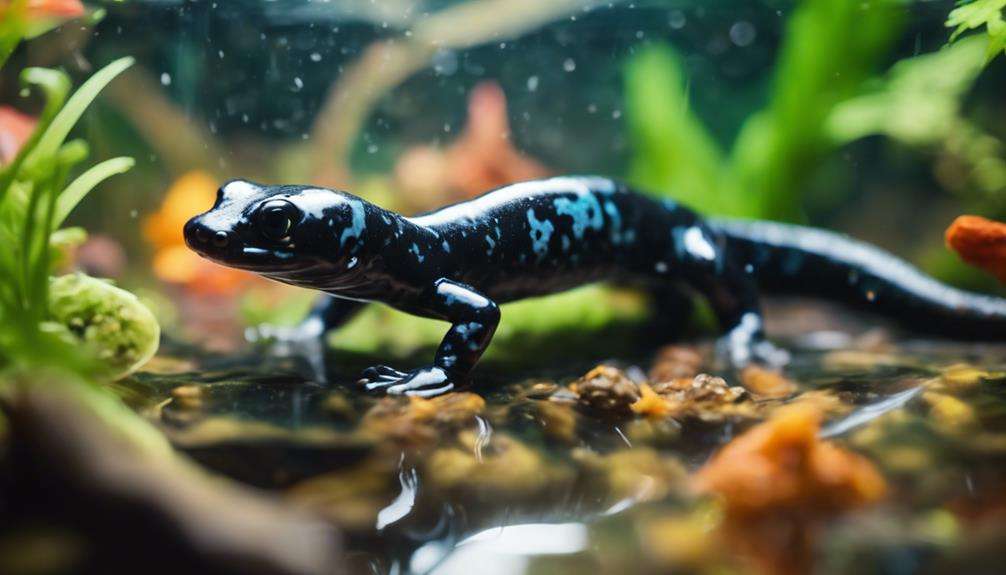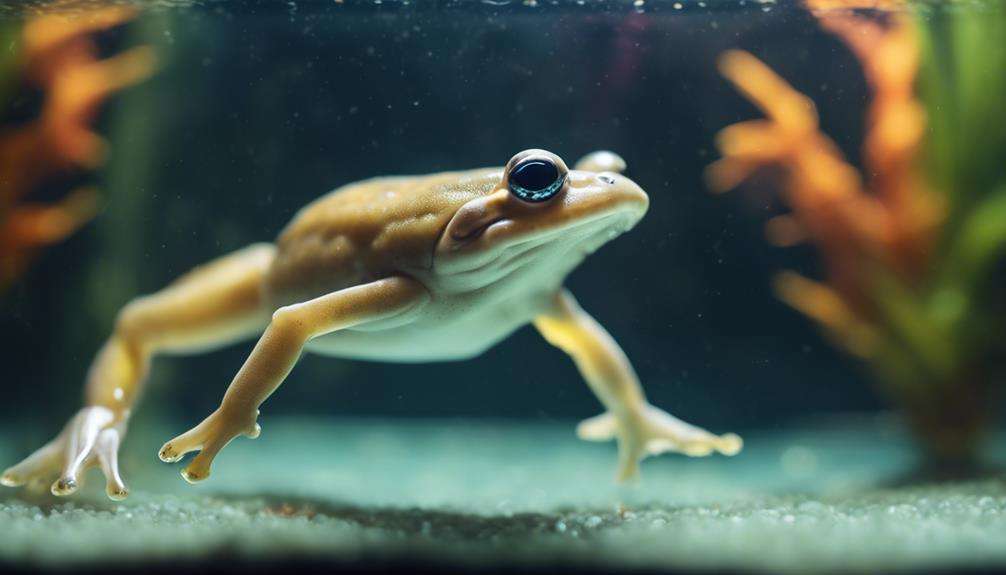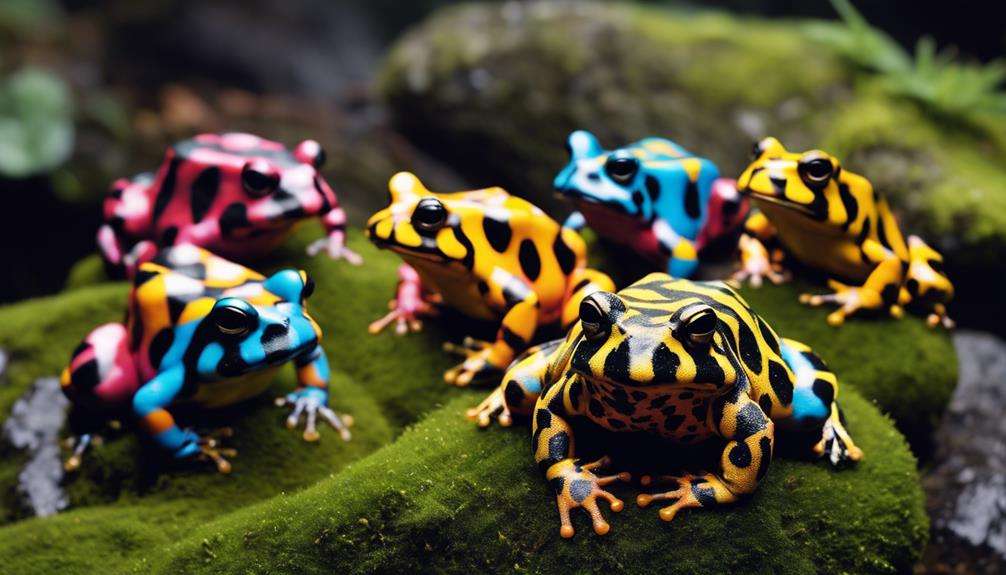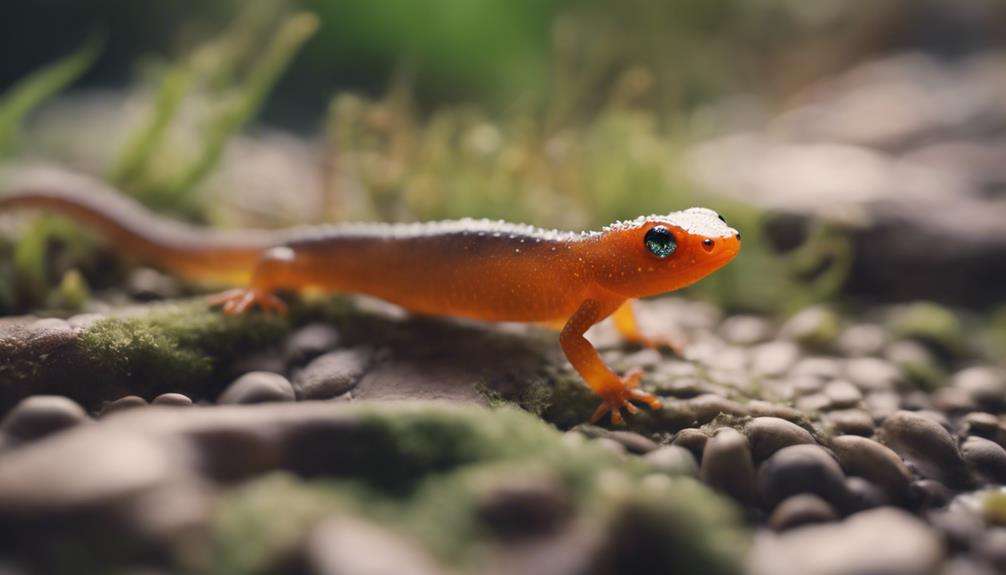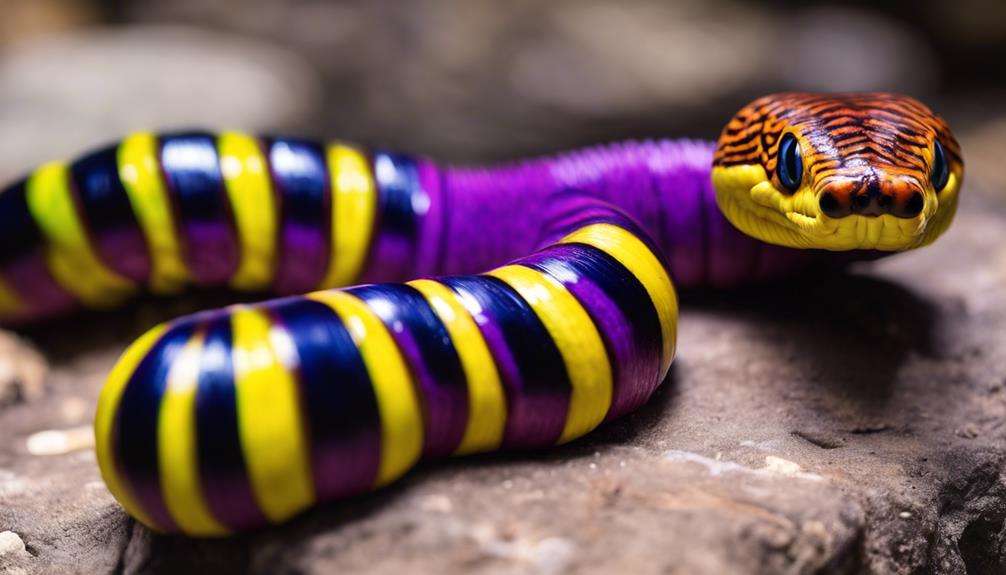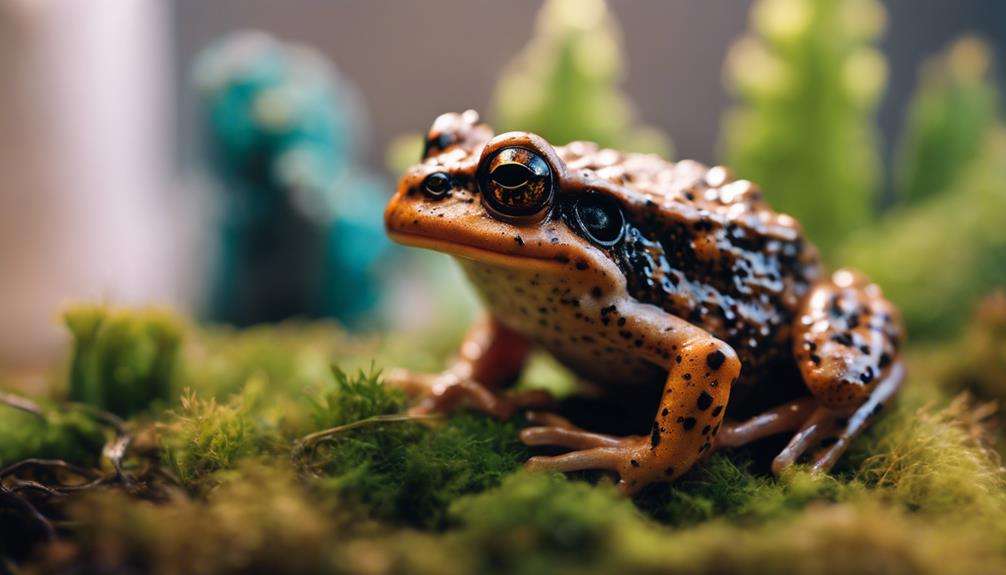When it comes to selecting the best horned frog varieties to own, you might find yourself torn between the striking appearance of Ceratophrys aurita and the fascinating behavior of Ceratophrys calcarata. These unique species offer intriguing characteristics that can captivate any amphibian enthusiast.
However, there's more to discover beyond just their looks and habits. Each horned frog variety possesses distinct traits that set it apart from the rest, making the decision of which one to choose a thought-provoking journey into the world of exotic pet ownership.
Key Takeaways
- Fantasy Horned Frog: Unique crossbreed with vibrant colors
- Horned Frog Characteristics: Ambush predators with striking appearance
- Horned Frog Care: Specific requirements for optimal health
- Horned Frog Diet: Varied diet crucial for well-being
Argentine Horned Frog
The Argentine Horned Frog, also known as the PacMan frog, captivates enthusiasts with its unique appearance and captivating behavior. This species is highly sought after in the pet trade due to its striking features and interesting habits. Originating from South America, the Argentine Horned Frog is recognizable by its large, round body and the horn-like projections above its eyes, resembling the iconic video game character.
In captivity, these frogs require specific care to thrive. Providing a suitable habitat with proper humidity levels and a varied diet is essential for their well-being. Argentine Horned Frogs are known for their voracious appetite, consuming insects, small rodents, fish, and even other frogs. With a lifespan of up to 15 years when cared for correctly, these low-maintenance pets are ideal for beginner frog owners seeking an engaging and interactive amphibian companion.
Proper frog care is crucial for ensuring the health and longevity of these fascinating creatures.
Vietnamese Horned Frog
Originating from Vietnam and other parts of Southeast Asia, the Vietnamese Horned Frog, scientifically known as Megophrys nasuta, showcases a distinctive triangular-shaped head with pointed 'horns' above its eyes. These frogs are ambush predators, relying on their remarkable camouflage to blend seamlessly into their surroundings and ambush unsuspecting prey like insects, small vertebrates, and even other frogs. Their coloration, which typically ranges from shades of brown to green, aids in their camouflage, allowing them to remain virtually invisible to their prey.
Being nocturnal creatures, Vietnamese Horned Frogs are most active during the night. Under the cover of darkness, they use their keen senses to locate food and navigate their environment with precision. Their nocturnal nature also helps them avoid predators that may pose a threat during the daytime. Overall, the Vietnamese Horned Frog's unique appearance, ambush hunting style, and nocturnal behavior make it a fascinating species to observe in its natural habitat.
Fantasy Horned Frog
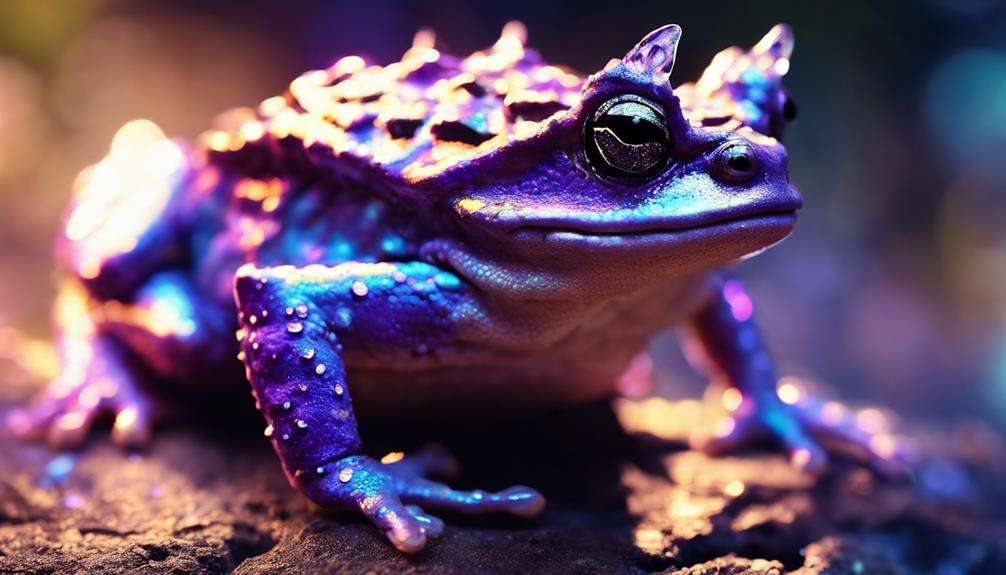
Emerging from the realm of hybridization, the Fantasy Horned Frog presents a captivating blend of characteristics inherited from its parent species, Ceratophrys cranwelli and Ceratophrys cornuta. These hybrid frogs are highly sought after in the pet trade due to their unique appearance and intriguing traits.
Here are some key points about the Fantasy Horned Frog:
- Hybrid Species: The Fantasy Horned Frog is a result of crossbreeding Ceratophrys cranwelli and Ceratophrys cornuta, combining the best features of both species into one mesmerizing frog.
- Color Patterns: One of the most striking features of the Fantasy Horned Frog is its diverse color patterns. These frogs can exhibit a wide range of colors, including various shades of green, brown, and red, making them visually appealing to frog enthusiasts.
- Popularity in the Pet Trade: Due to their captivating appearance and fascinating characteristics, Fantasy Horned Frogs have become popular choices for collectors and hobbyists looking to add a unique and eye-catching amphibian to their collection.
Cranwell's Horned Frog
Cranwell's Horned Frog, a captivating species in the Ceratophrys genus, showcases vibrant colors and distinctive horn-like projections above its eyes. Scientifically known as Ceratophrys cranwelli, this horned frog is a hybrid of Ceratophrys cranwelli and Ceratophrys cornuta, inheriting unique traits from both parent species. These frogs are popular among pet enthusiasts for their striking appearance and relatively easy care requirements, making them an excellent choice for beginner frog owners.
With their vibrant colors and characteristic horn-like projections, Cranwell's Horned Frogs stand out in any collection. Their hybrid nature gives them a diverse genetic background, contributing to their resilience and adaptability in captivity. Proper care, including a balanced diet, suitable housing, and regular health monitoring, is essential for ensuring the well-being of these fascinating creatures.
If you're considering adding a Cranwell's Horned Frog to your collection, be prepared to enjoy their vibrant colors and unique features while providing them with the care they need to thrive.
Chaco Horned Frog
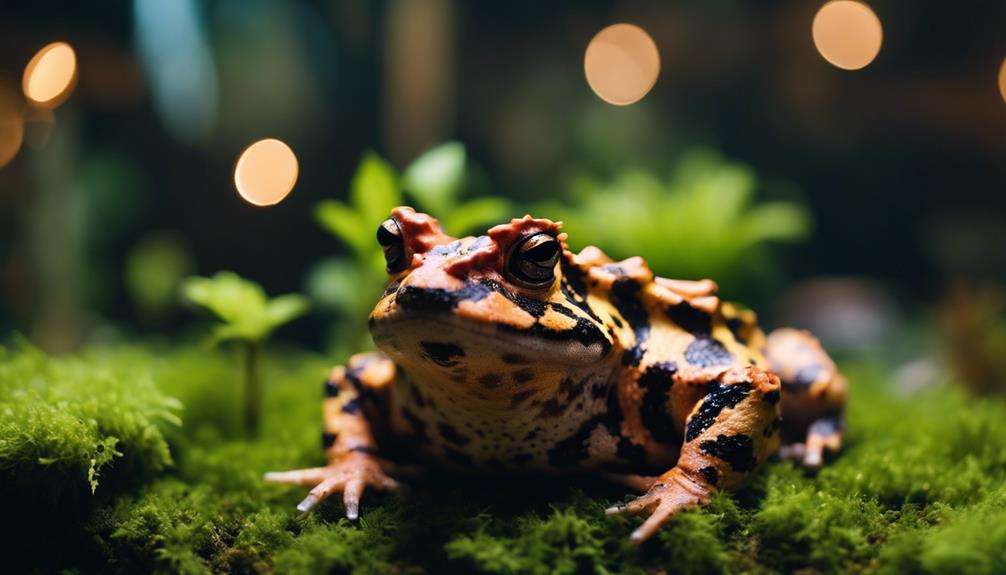
Chaco Horned Frogs, also known as Ceratophrys cranwelli, captivate enthusiasts with their unique green and brown coloration and voracious appetite for a wide variety of prey items. When considering Chaco Horned Frogs for the pet trade, here are some essential facts to keep in mind:
- Distinctive Origins: Originating from the Chaco region in Argentina, these horned frogs boast striking color patterns that set them apart from other frog species.
- Feeding Behavior: Chaco Horned Frogs are renowned for their voracious appetite, eagerly consuming a diverse range of prey items. Ensuring a varied diet is crucial for their health and wellbeing in captivity.
- Captive Care Requirements: To provide optimal care for Chaco Horned Frogs, a 10-gallon aquarium setup with suitable substrate and ample hiding spots is recommended. Additionally, maintaining a consistent feeding schedule and monitoring their environment closely are essential for their longevity in captivity.
Fantasy Horned Frog
The Fantasy Horned Frog showcases a variety of unique color patterns that make it a captivating species for enthusiasts.
Understanding the ideal tank setup is crucial to providing these frogs with a comfortable and stimulating environment.
Additionally, being aware of their specific feeding preferences is essential for their health and well-being in captivity.
Unique Color Patterns
Hybridized from Ceratophrys cranwelli and Ceratophrys cornuta, the Fantasy Horned Frog boasts a captivating array of color patterns, showcasing a unique blend inherited from its parent species. These frogs are bred for their striking appearances, with breeders meticulously selecting for vibrant hues and intricate patterns.
The color variations seen in Fantasy Horned Frogs can range from deep greens to earthy browns, and some individuals even exhibit stunning shades of red. The diverse palette displayed by these hybrids adds to their allure, making them highly sought-after in the pet trade.
Enthusiasts are drawn to the visually captivating nature of Fantasy Horned Frogs, appreciating the beauty and uniqueness each frog brings to their collection.
Ideal Tank Setup
Creating an optimal habitat for your Fantasy Horned Frog involves setting up a 10-gallon aquarium with a mix of substrate for burrowing and water for soaking. The substrate should be a blend of coconut fiber and moss to retain moisture and provide a soft surface for your frog.
Maintain humidity levels between 60-80% by misting the tank regularly and using a hygrometer to monitor levels. Include live or artificial plants for cover and hiding spots, as well as a shallow water dish for soaking.
To regulate temperature, use a heat mat under one side of the tank and a thermometer to ensure it stays between 75-85°F. Regularly clean the tank to prevent bacterial growth and maintain a healthy environment for your Fantasy Horned Frog.
Feeding Preferences
Transitioning from providing an ideal tank setup for your Fantasy Horned Frog, understanding their varied feeding preferences is crucial for ensuring their health and well-being. These sit-and-wait predators have a unique jaw structure and a sticky tongue for catching prey efficiently.
To cater to their feeding habits, consider the following:
- Diverse Diet: Fantasy Horned Frogs are voracious eaters and will thrive on a diet consisting of insects, small mammals, fish, other frogs, and small reptiles.
- Precautionary Measures: Be cautious when offering large prey items, especially for female frogs that can consume grown rats. Their teeth and jaw structure may lead to ingestion issues with oversized prey.
- Choking Hazards: Carefully monitor feeding sessions to prevent potential choking hazards, ensuring the prey is appropriately sized for your Fantasy Horned Frog's consumption.
Surinam Horned Frog
The Surinam Horned Frog, scientifically known as Ceratophrys cornuta, boasts unique physical features that set it apart from other frog species. This frog is easily identified by its robust body, horn-like projections above the eyes, and wide mouth, which aid in its predatory habits.
To care for a Surinam Horned Frog, it's essential to provide a suitable habitat with adequate hiding spots, a moisture gradient, and a diet rich in insects and other small prey.
Unique Physical Features
Sporting distinctive pointed horns above its eyes, the Surinam Horned Frog, scientifically known as Ceratophrys cornuta, showcases unique physical features that set it apart in the realm of amphibians. This species exhibits:
- Wide Mouth: Surinam Horned Frogs have a remarkably wide mouth, allowing them to consume prey items larger than their own size efficiently.
- Stocky Body: Their stocky body gives them a robust appearance, aiding in their role as impressive predators in their natural habitat.
- Color Variation: These frogs come in a range of colors, from shades of green and brown to sometimes displaying hues of red or orange, adding to their visual appeal.
These physical characteristics contribute to the Surinam Horned Frog's distinctiveness within the amphibian world.
Care Requirements
To ensure optimal well-being for your Surinam Horned Frog, meticulous attention to their specific care requirements is essential. These pet frogs require a 10-gallon tank for housing throughout their lives.
They may exhibit behavior such as burying themselves in substrate or sitting in water in captivity. Known for their voracious appetite, Surinam Horned Frogs consume a variety of prey items.
Female Surinam Horned Frogs are generally larger than males and chirp or croak less frequently. Providing proper care, including a balanced diet and regular health checks, can help these horned frogs live up to 15 years in captivity.
It's crucial to create a suitable environment that meets their needs to ensure their well-being and longevity.
Fantasy Horned Frog

Hybridization between Ceratophrys cranwelli and Ceratophrys cornuta yields the captivating Fantasy Horned Frog, blending distinct traits from each parent species. These hybrid frogs are gaining popularity in the pet trade due to their unique characteristics and striking appearance.
Here are some key facts about the Fantasy Horned Frog:
- Hybrid Nature: The Fantasy Horned Frog is a hybrid species resulting from the crossbreeding of Ceratophrys cranwelli and Ceratophrys cornuta, combining features from both parent species.
- Coloration Patterns: These frogs display a mix of coloration patterns inherited from their parent species, which can range from vibrant greens and yellows to darker hues, creating an eye-catching appearance.
- Size: Fantasy Horned Frogs typically fall within the size range of their parent species, with males usually being smaller than females. They can grow to be around 4 to 6 inches in length, making them a manageable size for pet amphibians.
Fantasy Horned Frogs offer enthusiasts an intriguing mix of traits, making them captivating additions to amphibian collections.
Ecuadorian Horned Frog
The Ecuadorian Horned Frog, scientifically known as Ceratophrys joazeirensis, showcases a remarkable array of color variations, ranging from vibrant greens to earthy browns.
These frogs require specific care requirements, including a balanced diet and a suitable habitat that mimics their natural environment.
Understanding the distinct color variations and care needs of the Ecuadorian Horned Frog is essential for maintaining their health and well-being in captivity.
Color Variations
Various color variations can be observed in Ecuadorian Horned Frogs, including albino, green, and patterned morphs, influenced by genetics and selective breeding. These color variations provide a unique and diverse range of appearances among Ecuadorian Horned Frogs:
- Albino Morphs: Albino Ecuadorian Horned Frogs lack melanin pigment, resulting in a white or pale yellow appearance with pink or red eyes.
- Green Morphs: Green Ecuadorian Horned Frogs display shades of green on their bodies, ranging from light lime green to dark forest green.
- Patterned Morphs: Patterned morphs of Ecuadorian Horned Frogs can have intricate markings, spots, or stripes in different colors on their bodies.
These variations make Ecuadorian Horned Frogs a visually captivating species for enthusiasts.
Care Requirements
To ensure optimal health and well-being for your Ecuadorian Horned Frog, maintaining a consistently humid terrarium environment is essential. These frogs require a humidity level of around 60-80% to mimic their natural habitat.
Providing a substrate that retains moisture, like coconut husk or sphagnum moss, can help maintain the necessary humidity levels. Temperature control is also crucial, with a range of 75-85°F being ideal for Ecuadorian Horned Frogs.
It's important to offer a varied diet consisting of insects, small mammals, and occasional frogs to meet their nutritional needs. With their low-maintenance nature, Ecuadorian Horned Frogs are suitable for beginner frog keepers looking to experience the joys of frog ownership.
Colombian Horned Frog
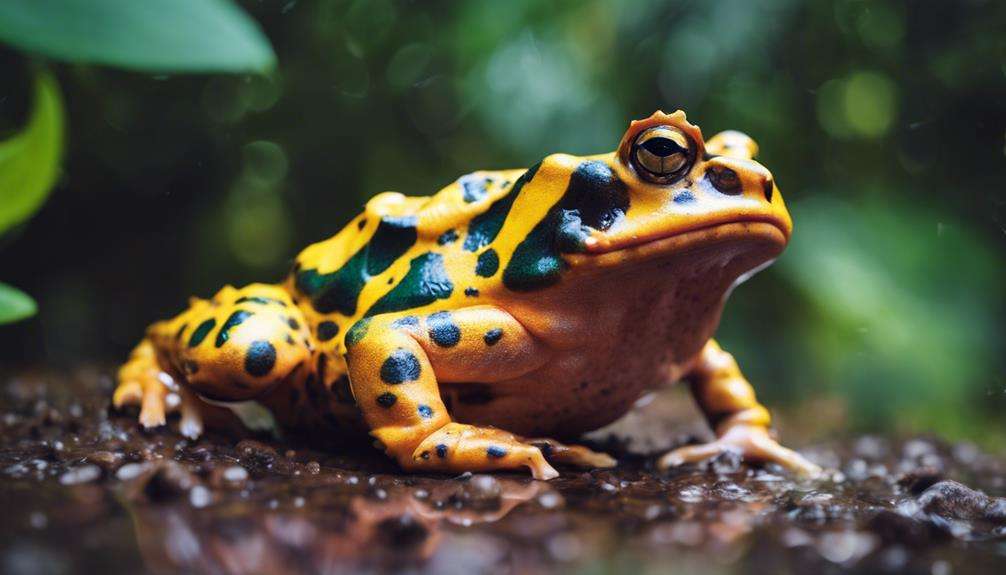
Natives to Colombia and parts of Brazil, Colombian Horned Frogs, scientifically known as Ceratophrys joazeirensis, display distinctive features such as prominent cranial crests and large mouths. These ambush predators rely on camouflage and their powerful jaws to catch prey effectively. Colombian Horned Frogs are relatively low-maintenance pets, making them a popular choice among frog enthusiasts.
Here are some key points to consider if you're thinking about owning a Colombian Horned Frog:
- Habitat Requirements:
- Provide a humid environment with access to water for soaking and hydration.
- Create a suitable terrarium setup with hiding spots and vegetation to mimic their natural habitat.
- Maintain proper temperature and humidity levels to ensure the well-being of your frog.
- Feeding:
- Offer a diet of insects and small vertebrates to meet their carnivorous needs.
- Feed them appropriately sized prey items to prevent choking or digestive issues.
- Consider dusting their food with calcium and vitamin supplements for optimal health benefits.
Frequently Asked Questions
What Is the Best Frog to Have as a Pet?
When choosing a pet frog, consider the Ornate Horned Frog for its captivating appearance, ease of care, and long lifespan. Ensure a top terrarium setup, provide an ideal diet of insects and worms, and monitor health and behavioral traits closely.
Can You Have an Argentine Horned Frog as a Pet?
Yes, you can have an Argentine Horned Frog as a pet. They require a spacious terrarium with proper substrate, hiding spots, and clean water. These frogs have voracious appetites, eating insects and worms. When handling, be gentle to avoid stress or injury.
What Is the Friendliest Frog in the World?
When considering the friendliest frog in the world, horned frog behavior stands out for its calm demeanor and ease of handling. Caring for pet frogs like Cranwell's species in suitable habitats provides unique and enjoyable experiences.
Can You Keep Horned Frogs Together?
You can keep horned frogs together if housed properly in a spacious terrarium with sufficient hiding spots and feeding areas. Monitor their behavior closely to ensure compatibility and prevent aggression, especially during feeding times.
Conclusion
In conclusion, owning a horned frog variety from the Ceratophrys genus can bring joy and fascination to any frog enthusiast.
From the vibrant colors of the Ceratophrys ornata to the distinctive features of the Ceratophrys calcarata, each species offers a unique and rewarding pet ownership experience.
With proper care and attention, these horned frogs can thrive for up to 15 years, making them a valuable addition to any collection.
Explore the diverse world of horned frogs and enrich your life with these captivating amphibians.
